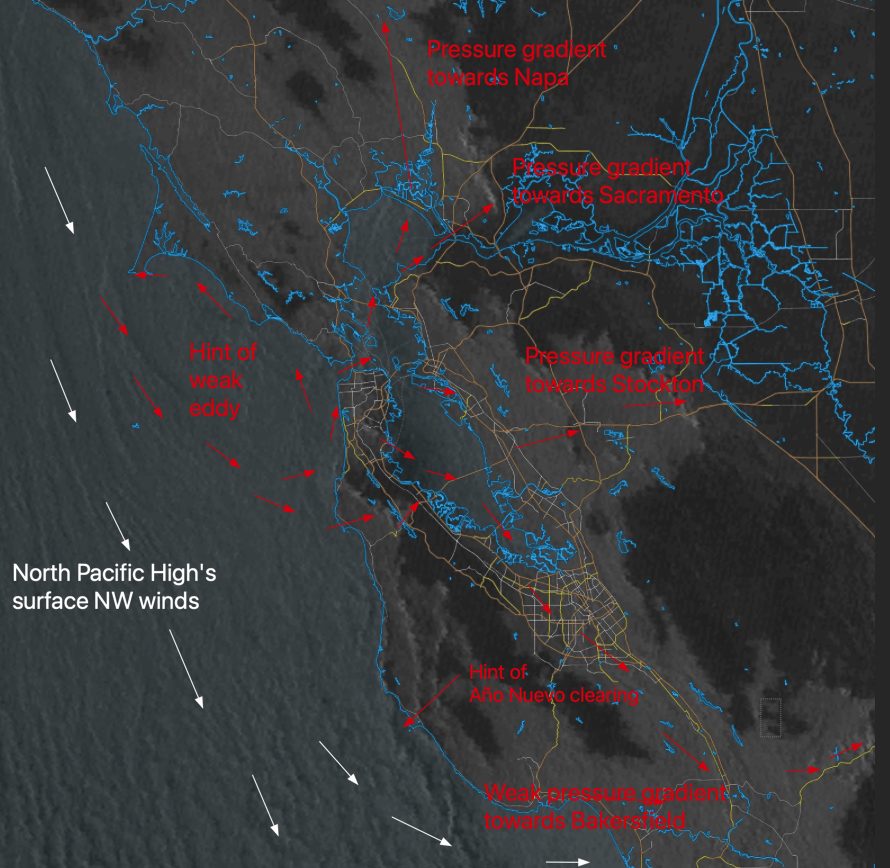
Thursday’s Wind Recipe:1- A huge Cut Off Low in the Gulf of Alaska anchors mild North Pacific High’s surface NW winds ramp up in the PM but maintains coast fog. 2- Southerly winds prevail in the AM from Half Moon Bay to Stinson but turn westerly as the eddy dies in the PM. 3- There…
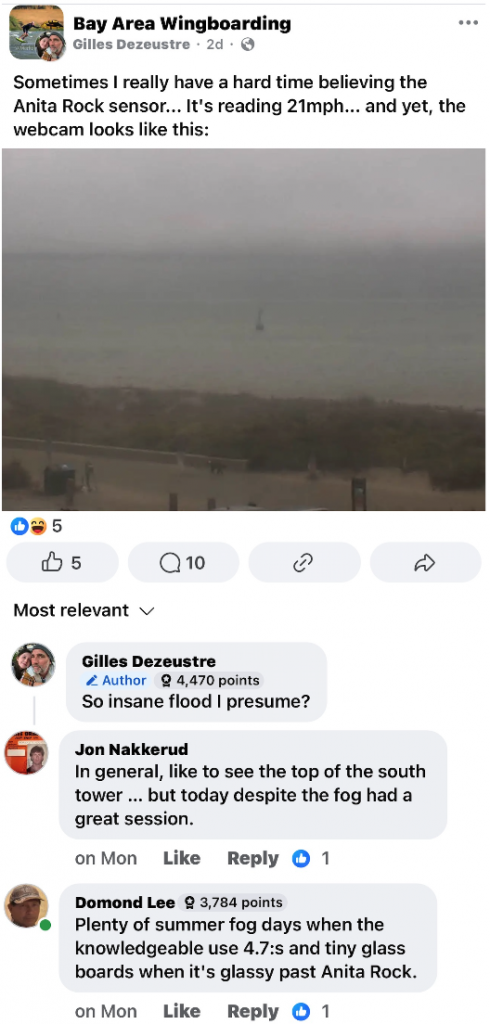
No, the sensor does not lie. Indeed, on days when there are NW ocean winds and a strong pressure gradient towards Stockton and/or Bakersfield it is very accurate. But when there is WSW wind due to an eddy or Marine Surge or a very strong Sacramento pressure gradient, the Anita Rock sensor will read much…

Wind Recipe:1- The Cut-Off Low ≈ 18,000 feet continues to block most of the NW ocean winds while enhancing:a. Coastal eddies. b. WSW ocean winds. c. Strong ≈ 1000 feet aloft WSW turbocharges surface wind at Sherman/TI/N. Tower. d. broken atypical marine layer. d. Cool weather. 2- The WSW ocean winds accelerate through gaps in…

Saturday’s Wind Recipe: Rio Daze is milder but solid!1- The North Pacific High FINALLY gets rid of that eddy inducing ridge into far Northern California. So Eddy DIES! 2- So our ocean winds turn from SSW to WNW and curve to almost every site in the Bay Area as… 3- The Central Valley low retreats…
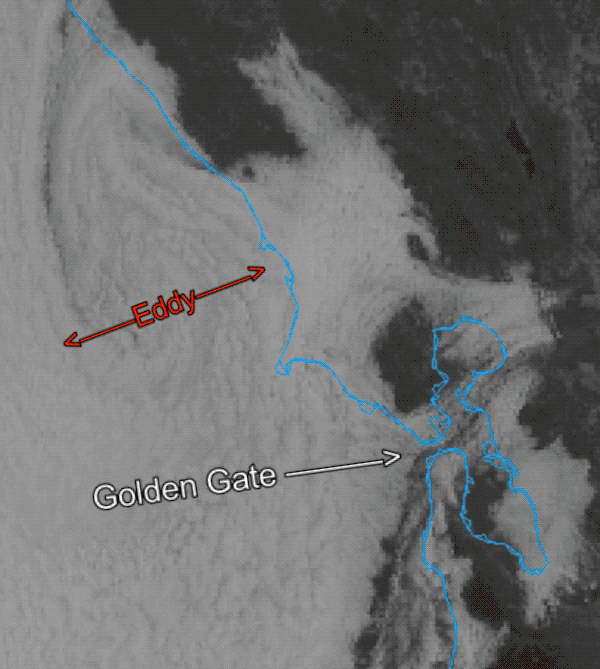
For nearly two weeks, a persistent counter-clockwise eddy off the coast of San Francisco has been the dominant meteorological feature, overriding the typical summer wind patterns of NW ocean winds and funneling strong southwesterly winds through the Golden Gate and into much of the San Francisco Bay. This unusual and prolonged event is the result…
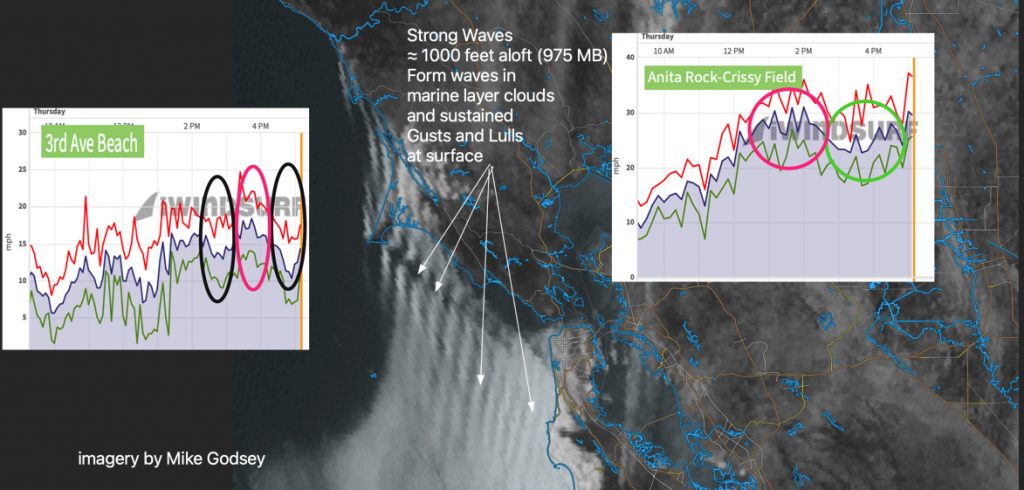
I hope every one saw this notice in the AM forecast: “Be ready for a chance of abrupt fades, especially on Peninsula” and Crissy was really up and down as forecast. he strong winds just aloft mentioned in the forecast today form ripples as they hit higher hills. This causes slow moving standing waves where…
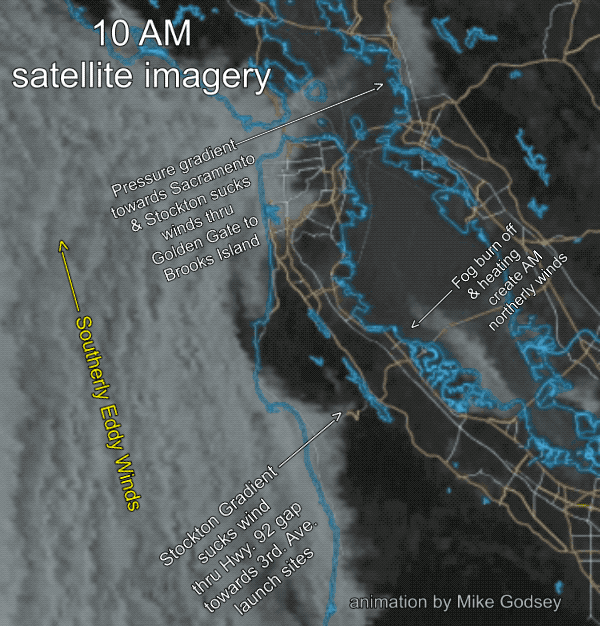
Wind Recipe: Note: Good chance late afternoon fog shuts down Crissy. 1- Weak elongated counter-clockwise eddy and its southerly coast winds expanded overnight less than expected, with southerly coast winds from Pismo to near Pt. Area. 2- The eddy spins all day as it gains southerly support from a low-pressure that extends up to ≈…

A massive eddy off San Francisco to Jalama divert the North Pacific High’s surface NW winds away from the Central California coast all day. However, these eddy winds help the Lopez and maybe Isabella winds. The eddy you see from north of San Francisco eddy to past Jalama diverts the North Pacific High’s surface NW…
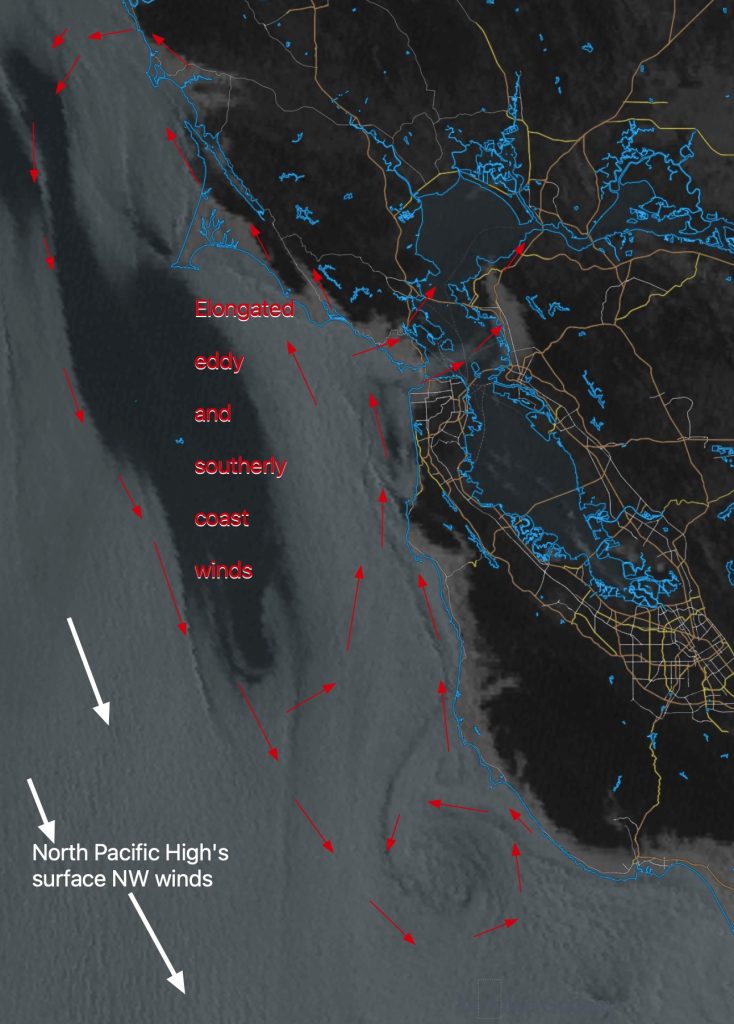
Forecast Jargon Decoder Big Eddy delivers low/mid 20’s Anita Rock to Slot to Brooks Is. to Larkspur/Clark’s & bit lesser Tigers, Benicia to Sherman. 1- Overnight, the NPH shoved a huge ridge into far Northern California and the Pacific Northwest causing low-pressure to develop from Stockton to Pt. Arena. 2- The satellite imagery shows this…
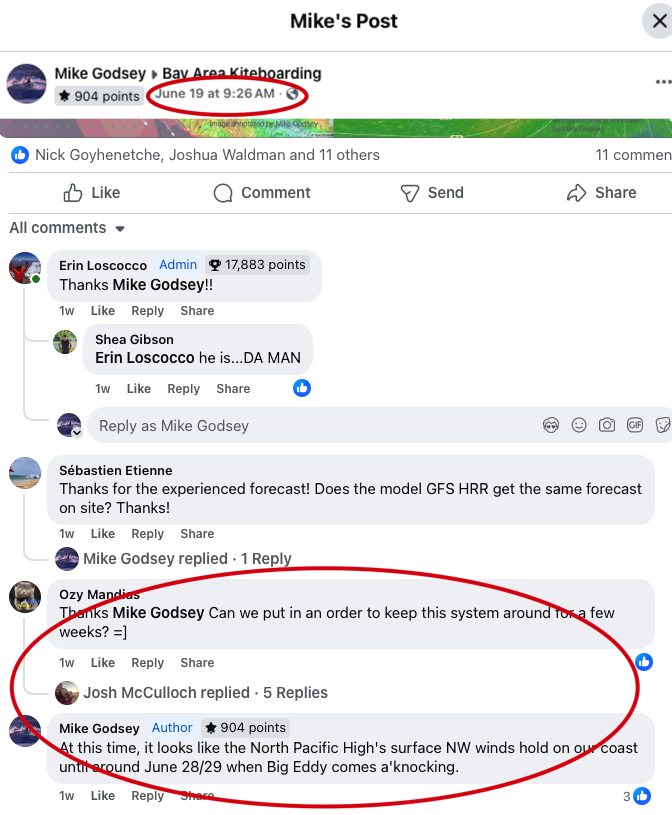
Way back in June 19, during a very strong NW wind pattern, I was asked on Facebook how long the NW ocean winds would last. Here is my Facebook reply: Now, over a week later here is my forecast for June 28. It is not polite to brag. But sometimes you just can’t resist in…










